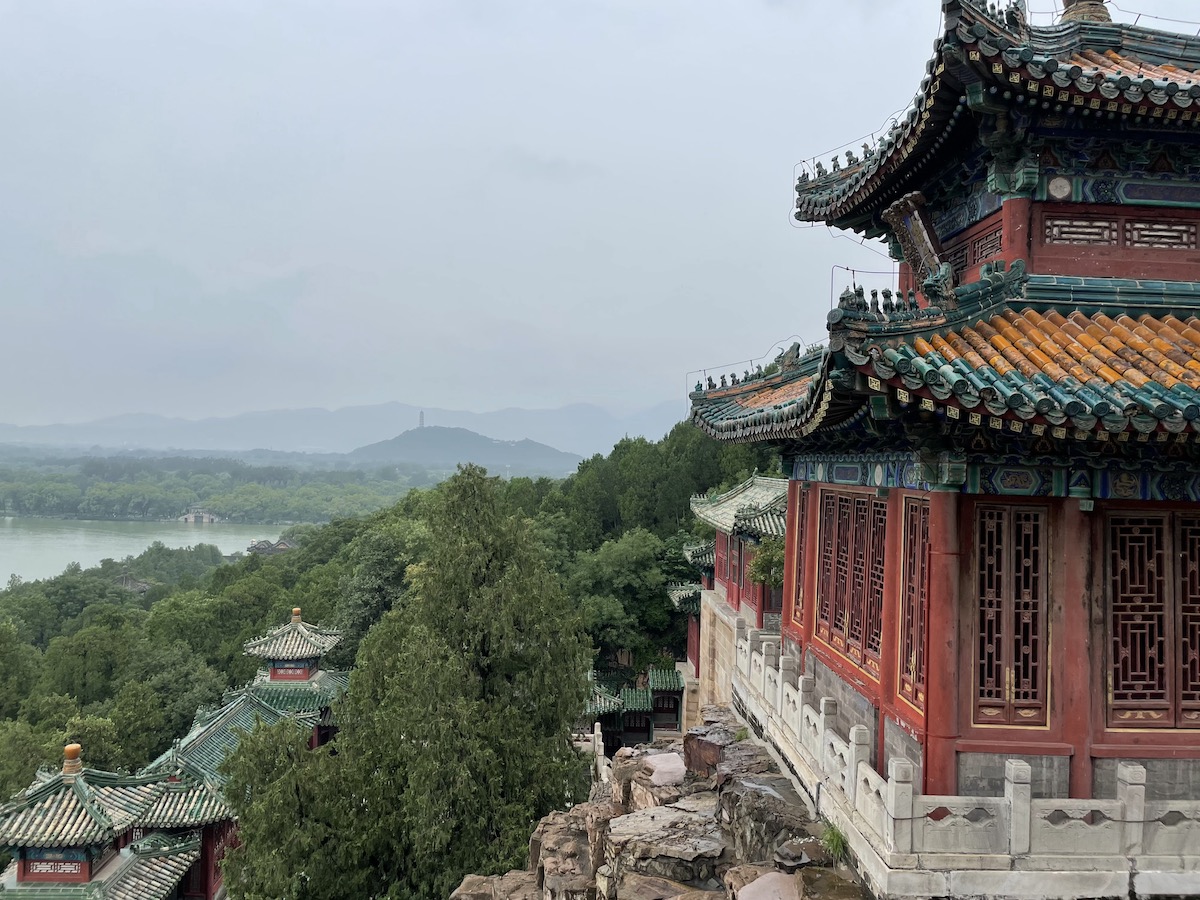Sometimes the most peaceful places have histories full of war, embezzlement, and imperial collapse. How could on Earth could a green forested hill covered in classical Chinese architecture, surrounded by a placid lake have seen such turbulence? That’s the Summer Palace in Beijing for ya.
Beijing’s Summer Palace doesn’t quite get as much hype as the Forbidden City or the Great Wall. That’s a shame because the Summer Palace (or 颐和园 in Chinese) is an absolutely magnificent and at times awe-inspiring sight. Aside from the history, it’s also pretty damn gorgeous.
History of the Summer Palace and the End of an Empire
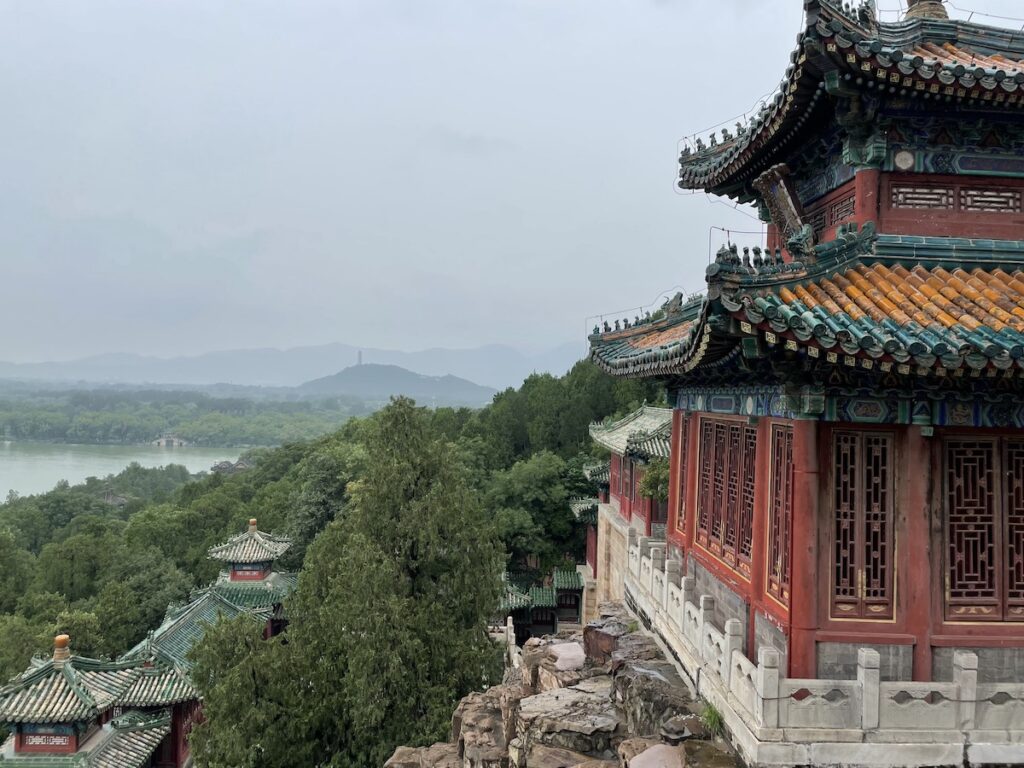
Not to be confused with the ruins nearby, the Summer Palace holds an important place in Chinese History. Construction started in 1750, as a birthday present from Emperor Qianlong to his mother. Aww, how sweet. Think of that the next time you hand your poor, suffering mother a crappy macaroni sculpture or some dumb flowers for her birthday.
Then the Opium Wars raged. In 1860 a combined army of British and French troops burned the palace to the ground, all for the right to deal drugs. The palace’s treasures were looted, though they might be on display at your local museum. Those wily British even stole one of the royal dogs. They named it “Looty” and gave it to the Queen.
However, the rulers of the Qing Dynasty weren’t about to give up on their dreams of lounging about in the cool mountains surrounding Beijing. In 1886, Empress Dowager Cixi embezzled funds from China’s navy to rebuild the Summer Palace. The 1886 version is the one that stands today. It’s now a major tourist attraction and a UNESCO World Heritage site.
How to Get to the Summer Palace from Downtown Beijing
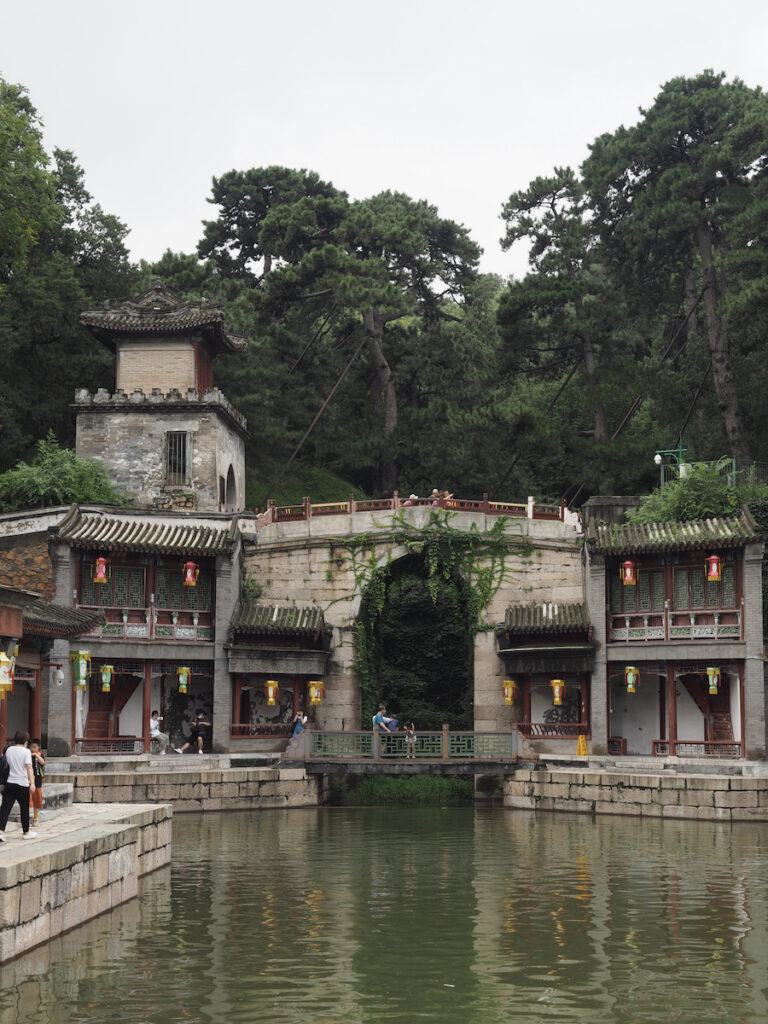
You’ll have an easier time than the British and French getting to the Summer Palace today. You can literally take the Beijing subway there. Just take line 4 to Beigongmen station. Follow the crowds and walk south for about five minutes and you’ll be at the gate. Taxis are fairly cheap as well, and driving takes about half an hour depending on traffic.
The basic entrance fee is 30 yuan, however, there are some extra sites within the palace that charge extra. I’d suggest just paying 60 (less than $10 US) for the combo ticket. That way you don’t have to mess around with buying extra tickets in the park. It’s actually a pretty cheap price to visit one of the best-preserved imperial gardens in the world.
Be warned: the Summer Palace is quite popular among the Chinese. Expect big crowds during the high tourist season, comparable to other places like the Great Wall or Cambodia’s Angkor Wat.
Inside the Summer Palace
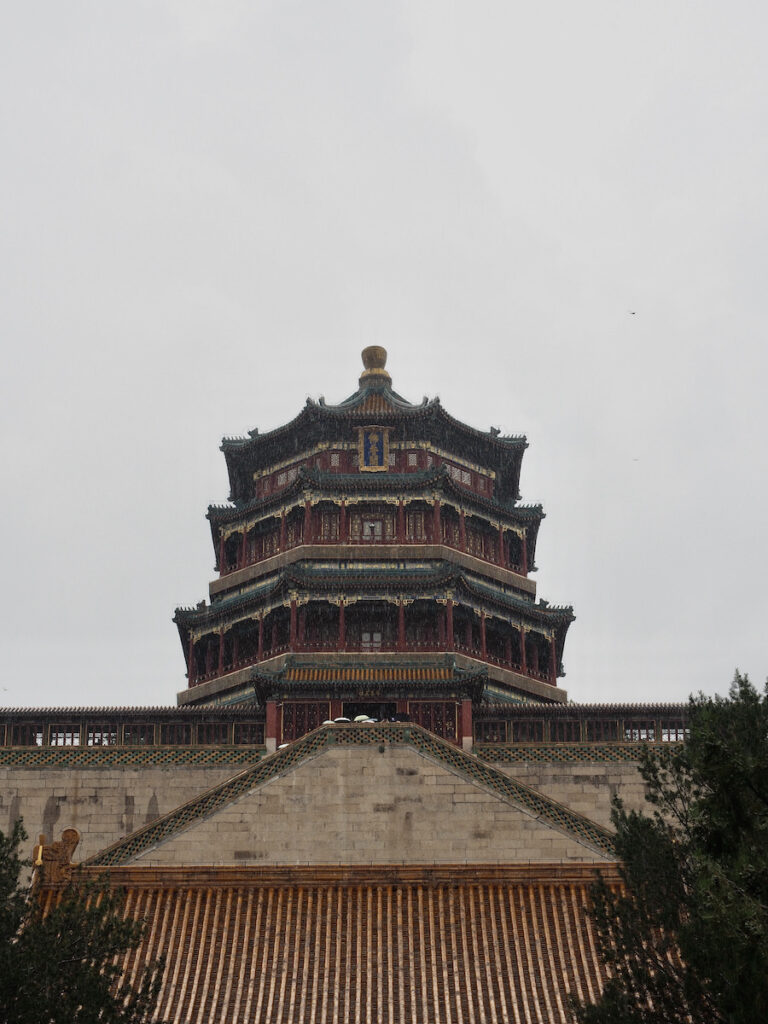
The gardens of the Summer Palace are huge. We didn’t see all of it, and we were there all day. Of course, we are also quite slow, so you could probably cover it all in a few hours if you run. However, there’s enough there to make a leisurely visit worthwhile. There is also a nice little restaurant in a former concubine’s bedroom near the Marble Boat.
I’ve probably missed something, since the site is huge, and part of it was under construction, but below were my favorite parts of Beijing’s Summer Palace.
The Tower of Buddhist Incense
This round and poetically named pagoda is probably the most iconic building in the Summer Palace. It also costs extra to visit, but again, is totally worth it. Also, you have to hike up a bunch of steep stairs, but you’ll be rewarded with an amazing view of Kunming Lake and the surrounding gardens. The architecture of the tower itself is also gorgeous.
Kunming Lake
The lake itself is magnificent. It was modeled on the famous West Lake in Hangzhou. West Lake is great, but I’d argue Kunming Lake is almost as good. Getting away from the central area around Longevity Hill, there’s a very long and pleasant walkway that circles around the lake. Weeping willows dangle over lotuses floating in the water. The crowd thins out here, too, and it’s a great place to feel peaceful and relaxed if that’s what you’re into.
Suzhou Street
Suzhou Street is a stunning example of imperial opulence. It costs a little extra to enter but was totally worth it. Just past the entrance, a large stone bridge towers over a canal with sharp rectangular edges. A narrow sidewalk rings around the whole thing, with colorful shopfront facades built up against the base of the surrounding hill.
Legend has it that the emperor had a favorite concubine from Suzhou. He didn’t want her to get homesick, so he built Suzhou Street as a replica of her hometown. Whenever she wanted to walk down the street, hired actors would pretend to be Suzhou merchants and townsfolk.
Now, to be honest, Suzhou Street in the Summer Palace looks almost nothing like the real city of Suzhou. Still, it’s pretty impressive to build an entire street just for a concubine. And, a great use of tax dollars!
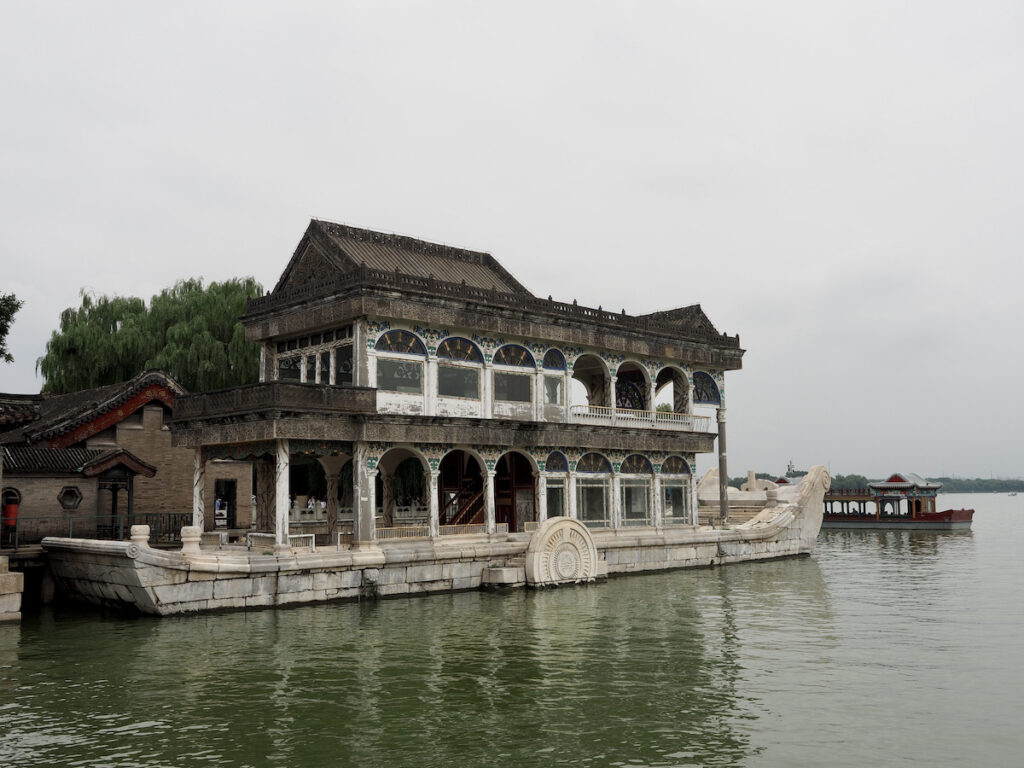
The Marble Boat
Even though you can’t go on or in the Marble Boat, it was still one of my favorite parts of the Summer Palace. It sits on Kunming Lake, in the shadow of Longevity Hill and the Tower of Buddhist Incense. It’s a boat. Made of marble.
It was first built in 1755, the construction supposedly inspired by the quote: “water can carry a boat as well as overturn it.” (The water represents the people, and the boat is the government.) In response, Emperor Qianlong had the boat secured in the lake to symbolize the steadfast and eternal rule of the Qing Empire. The wooden top part of the boat was burned in Opium Wars and later rebuilt by Empress Dowager Cixi.
This was what she funneled China’s naval budget into: a stone boat that can’t go anywhere on a man-made lake. The Qing Dynasty was overthrown a few decades later. The marble boat hasn’t gone anywhere.
Look Upon my Works, Ye Mighty, and Despair…
So, there you have it. The Summer Palace in Beijing stands today as not only a beautiful monument to classical Chinese landscaping and architecture but a glimpse into the priorities of a declining imperial dynasty. Even if you don’t care about history, it is very very pretty. Don’t miss the Summer Palace the next time you’re in Beijing.
Just try not to loot anything.
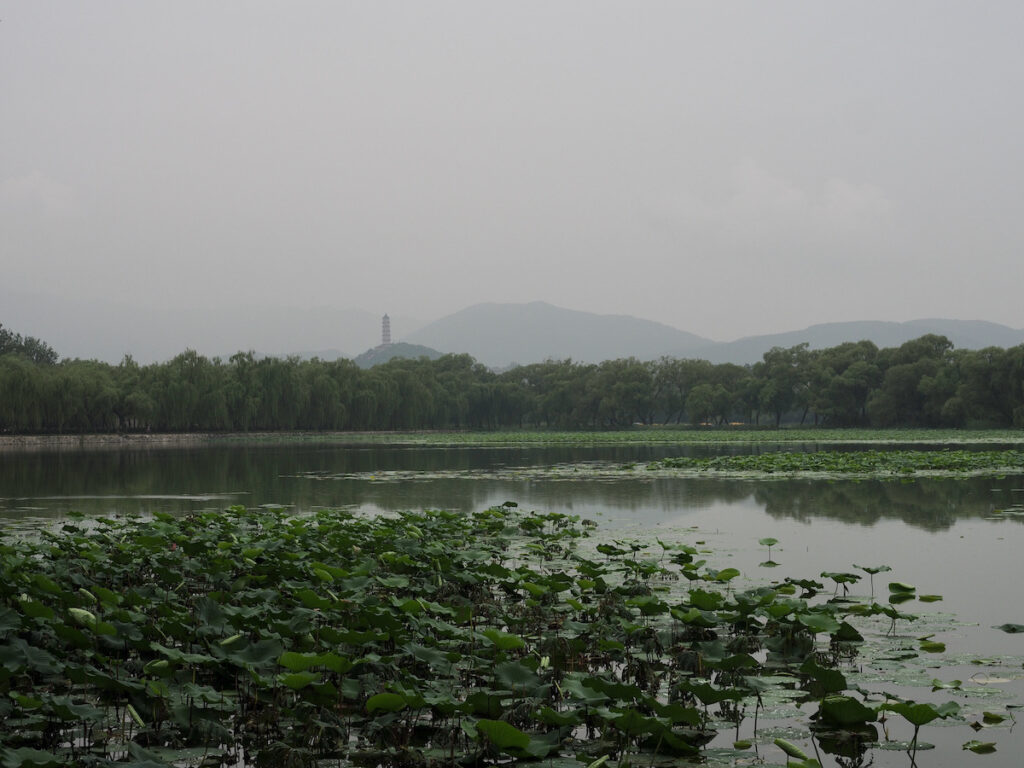
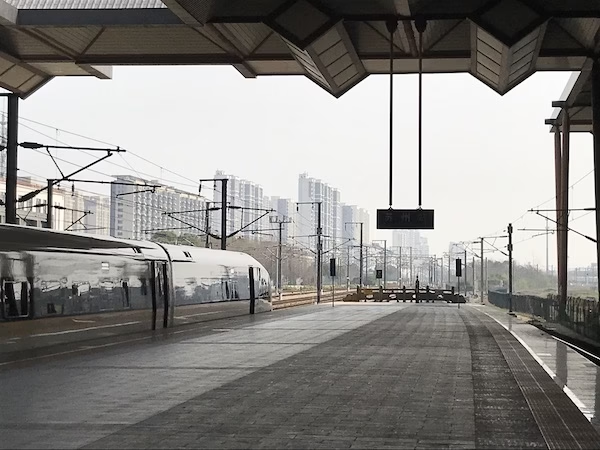
Need Train Tickets in China?
China’s high speed rail network is fast and efficient, but it’s difficult for non-Chinese citizens to get tickets. Fortunately, Trip.com makes buying train tickets as hassle free as traveling through China can possibly be. Click the link below to get your Chinese train tickets. If you buy your train tickets using the link, I’ll receive a small commission and you’ll feel good knowing you’ve helped out an independent blogger.

